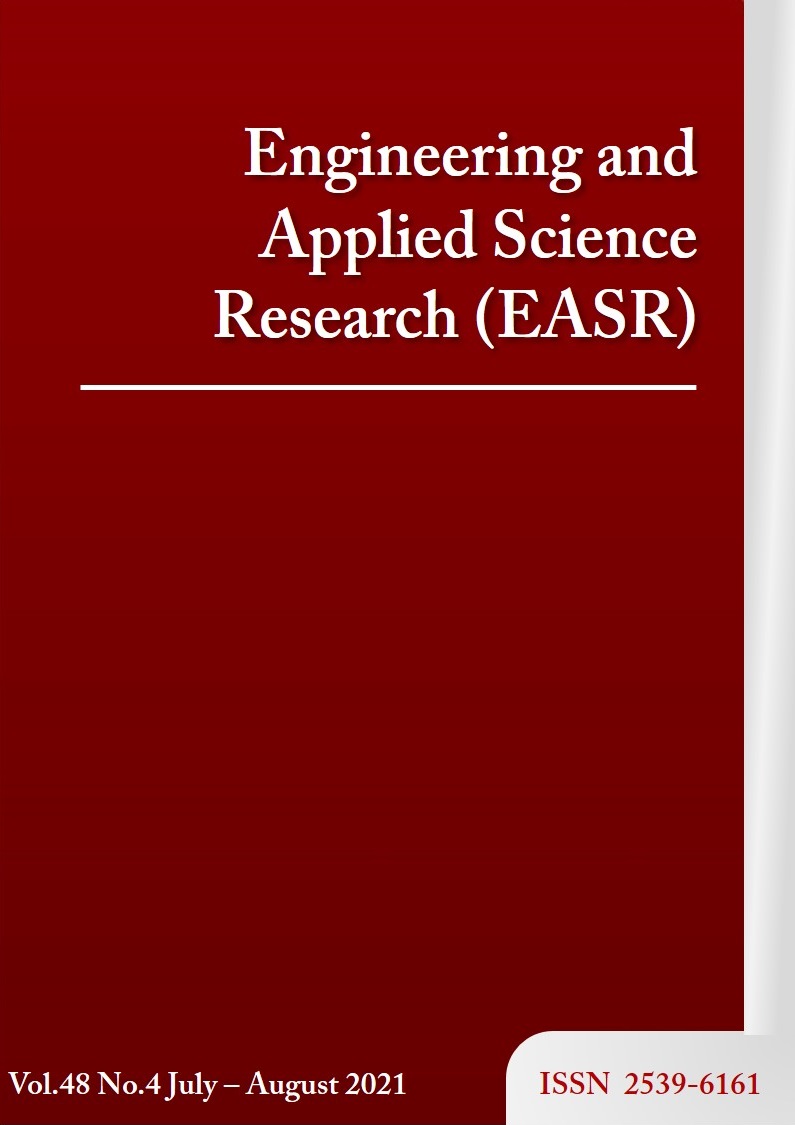Production and characterization of asbestos-free brake lining material using agro wastes
Main Article Content
Abstract
The health problems associated with the use of asbestos based brake linings have motivated research on the use of ecofriendly-agro based biomaterials as reinforcing agents in composite materials used for brake pad lining production. This research work studies the possibilities of using palm kernel shell (PKS), coconut shell (CNS), and canarium sweinfurthii shell (CSS) powder for asbestos-free brake lining materials production. The powders alongside the relevant fillers were used in the production of the brake lining. Compositions of the reinforcing powders were varied from 25% to 40% that of resin binder was varied from 58% to 43%, while those of filler metal and curing agents were kept constant. These materials were weighed, formulated, mixed, cured, and moulded. The developed composite materials were characterized and subjected to water and oil absorption, compressive strength, hardness, and wear tests. Results of the analysis revealed that increase in reinforcing materials results in an increase in the water and oil absorption of the samples. The composite’s compressive strength equally increased with the introduction of up to 35% composition. The measured value of coefficient of friction was found to be within an acceptable range. Also, when mixed with other fillers and bounded, CSS powder proved to be a very promising material for brake lining production.
Article Details
This work is licensed under a Creative Commons Attribution-NonCommercial-NoDerivatives 4.0 International License.
References
Reddy SLN, Naveen S, Shilpa B, Rao KRK. Steady state thermal analysis of rotor disc break. J Mech Civ Eng. 2016;13(2):34-7.
Asim R. Overview of disc brakes and related phenomena. Int J Veh Noise Vib. 2014;10(4):257-301.
Blau PJ. Compositions, functions and testing of friction brake materials and their additives. Energy. 2001;27:38.
Smales H. Friction materials-black art or science. Inst Mech Eng. 1995;209(3):151-7.
McCormack V, Peto J, Byrnes G, Straif K, Boffetta P. Estimating the asbestos-related lung cancer burden from mesothelioma mortality. Br J Cancer. 2012;106(3):575-84.
Kerger BD, James RC, Galbraith DA. Tumors that mimic asbestos-related mesothelioma: time to consider a genetics-based tumor registry?. Front Genet. 2014;5:1-14.
Onyeneke FN, Anaele JU, Ugwuegbu CC. Production of motor vehicle brake pad using local materials (perriwinkle and coconut shell). Int J Eng Sci. 2014:2319-1813.
Adeyemi O, Nuhu A, Boye T. Development of asbestos - free automotive brake pad using ternary agro-waste fillers. J Multidiscip Eng Sci Tech. 2016;3(7):5307-23.
Koya OA. Evaluation of mechanical characteristics of friction lining from agricultural waste. Int J Adv Res Tech. 2013;2(11):1-5.
Ikpambese KK, Gundu DT, Tuleun LT. Evaluation of palm kernel fibers (PKFs) for production of asbestos-free automotive brake pads. J King Saud Univ Eng Sci. 2016;28(1):110-8.
Ibhadode AO, Dagwa IM. Development of asbestos-free friction lining material from palm kernel shell. J Brazilian Soc Mech Sci Eng. 2008;30(2):166-73.
Agunsoye JO, Aigbodion VS. Bagasse filled recycled polyethylene bio-composites: morphological and mechanical properties study. Results Phys. 2013;3:187-94.
Obot MU, Yawas DS, Aku SY. Development of an abrasive material using periwinkle shells. J King Saud Univ Eng Sci. 2017;29(3):284-8.
Yawas DS. Aku SY. Amaren SG. Morphology and properties of periwinkle shell asbestos-free brake pad. J King Saud Univ Eng Sci. 2016;28(1):103-9.
Ibukun Olabisi A. Development and assessment of composite brake pad using pulverized cocoa beans shells filler. Int J Mater Sci Appl. 2016;5(2):66.
Madugu IA, Abdulwahab M, Aigbodion VS. Effect of iron fillings on the properties and microstructure of cast fiber-polyester/iron filings particulate composite. J Alloys Compd. 2009;476(1-2):807-11.
Dagwa IM, Builders PF, Achebo J. Characterization of palm kernel shell powder for use in polymer matrix composites. Int J Mech Mechatronics Eng. 2012;12(4):88-93.
Bhaskar J, Singh VK. Water absorption and compressive properties of coconut shell particle reinforced-epoxy composite. J Mater Environ Sci. 2013;4(1):113-6.
Aigbodion VS, Akadike U, Hassan SB, Asuke F, Agunsoye JO. Development of asbestos - free brake pad using bagasse. Tribol Ind. 2010;32(1):12-8.
Edokpia RO, Aigbodion VS, Obiorah OB, Atuanya CU. Evaluation of the properties of ecofriendly brake pad using egg shell particles-Gum Arabic. Results Phys. 2014:1-10.



